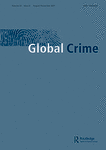By Claire Provost,
U.S. leads global drug war
The role of the United States in exporting the destructive war on drugs to other countries is unparalleled. Since 1971, the U.S. has spent more than a trillion dollars on the war on drugs, prioritising law enforcement responses and fuelling mass incarceration within its borders. It has also played a leading role in pushing and funding punitive responses to drugs internationally. This has continued despite clear evidence that such approaches don’t work to achieve their stated aims (ending drug use and sales) while having devastating effects on rights and health, including mass criminalisation, disease transmission, repression and displacement.
This report demonstrates how U.S. assistance has supported and expanded destructive and deadly anti-drug responses in low- and middle-income countries around the world. It also presents new follow-the-money data analysis on U.S. international drug control spending by various government departments and budgets. This includes official development assistance (ODA) intended to support poverty reduction and other global development goals; and three case studies – Colombia, Mexico, and the Philippines – to reveal the damage done by this spending.
Vast and complex global network
The 2023 International Narcotics Control Strategy Report by the U.S. State Department described a “whole of government approach” to drug control and a strategy of deep collaboration and “capacity building” with counterparts in other countries. A vast and complex global network of U.S. government agencies, programs, and activities has been developed in the ongoing “war on drugs.”
U.S. support for drug enforcement internationally includes financial, material and technical assistance. The U.S. drug war bureaucracy is expansive, involving numerous agencies of the government, including the Department of Defense (DOD), Central Intelligence Agency (CIA), National Security Agency (NSA), State Department, Department of Homeland Security, United States Agency for International Development (USAID), and the Federal Bureau of Investigation (FBI), as well as the infamous Drug Enforcement Administration (DEA), under the Department of Justice (DOJ). By 2023, the DEA had 93 foreign offices in 69 countries.
Follow the money
Over the decade between 2015-2024, a total of almost $13 billion of U.S. taxpayer money was allocated to “counternarcotics” activities internationally.
For fiscal year 2025, the President requested $1 billion for international “counternarcotics” activities. Almost half of this request was to be received and spent by the DEA ($480 million); the second largest planned intermediary for this spending was to be the State Department’s INL bureau (about $350 million).
Separate budget documents from the involved departments contain further detail on where and how international drug control funding is to be spent. For instance, the U.S. Department of State’s 2023 International Narcotics Control Strategy Report (INCSR) showed that Latin America was budgeted to receive more than half ($225 million) of the total $375 million for “counternarcotics” requested by the department and its agencies (including INL and USAID). Colombia was to be the largest single country recipient ($115 million).
Aid donors (led by the U.S.) spent almost $1 billion of their ODA on “narcotics control” projects in dozens of low- and middle-income countries over the decade 2013-2022. No donor contributed more to these “narcotics control” budgets than the U.S.
Controversially, the U.S. has been increasingly classifying drug control spending as ODA: in 2020, it counted just over $30 million like this; in 2021 that figure was $309 million (and while it dropped to $106 million in 2022, this was still higher than earlier years).
Profit-making companies are also benefiting from this ODA spending on “narcotics control.” The top “channel” for this spending has been private companies (“private sector institutions,” receiving $244 million over the decade) followed by the governments of countries funded ($202 million), and then multilateral organisations such as UNODC ($77 million).
Harm Reduction International | Drug Policy Alliance, 2024. 47p.





















